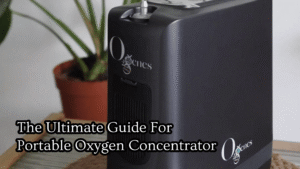The article by Ana Mitrovic Jovanovic delves into Hyperbaric Oxygen Therapy (HBOT) in infertility patients as a potential remedy for infertility. Despite the advancements in reproductive technologies, the modern era of infertility treatment still encounters challenges.
The article identifies various factors contributing to infertility, including embryo quality, endometrial receptivity, repeated implantation failure, ovarian reserve, and sperm quality.
Successful implantation is contingent upon the presence of a healthy blastocyst and the endometrium reaching a specific stage of receptivity characterized by adequate oxygenation, vascularization, and the expression of various genes and molecular factors that facilitate optimal endometrial receptivity.
To address these factors and enhance infertility treatment outcomes, the article proposes the use of hyperbaric oxygenation therapy, a method employed for over 15 years. During this therapy, patients are exposed to high-pressure oxygen in a multi-place chamber for 70 minutes, over 7-10 consecutive days, typically starting between the 2nd and 5th day of the menstrual cycle.
The evaluation of hyperbaric oxygen therapy’s effects revealed several positive outcomes, including improved endometrial oxygenation and vascularization, enhanced egg and embryo quality, increased responsiveness to ovarian stimulation, and higher pregnancy rates.
Furthermore, HBOT showed positive results in folliculometry, indicating excellent responses in endometrial thickness and triple-line endometrium. The desirable quality of the endometrium was notably better in cycles with hyperbaric oxygen therapy, with effects extending into the following month. While there was a slightly higher uterine blood vessel resistance observed, this was considered an expected reaction to hyperbaric therapy. Subendometrial blood vessel mapping in cycles before and after therapy displayed an intensified capillary network in the endometrium, particularly 4-6 weeks post-HBOT.
The article suggests that hyperbaric oxygen therapy, which employs oxygen as a therapeutic tool under higher pressure, could significantly improve pregnancy implantation outcomes by enhancing endometrial receptivity. If endometrial receptivity hinges on proper growth, vascularization, and oxygenation, then hyperbaric oxygen therapy emerges as an optimal treatment choice.
The article also discusses the application of hyperbaric oxygen therapy in male factor infertility. The therapy resulted in increased sperm motility, enhanced spermatogenesis, and improved sperm function, particularly when used in conjunction with high-quality sperm preparation media. Notably, the benefits of hyperbaric oxygen therapy persisted, with positive effects on spermatogenesis and DNA integrity observed 70 to 90 days after therapy.
Final Words
There are many factors that ultimately impact on male and female fertility and chances of conceiving, but our experience shows that hyperbaric oxygen therapy could have a positive impact on infertility treatment and increase male and female fertility.
The article suggests that hyperbaric oxygen therapy may hold promise in improving infertility treatment outcomes for both male and female patients, addressing various factors contributing to fertility challenges.






